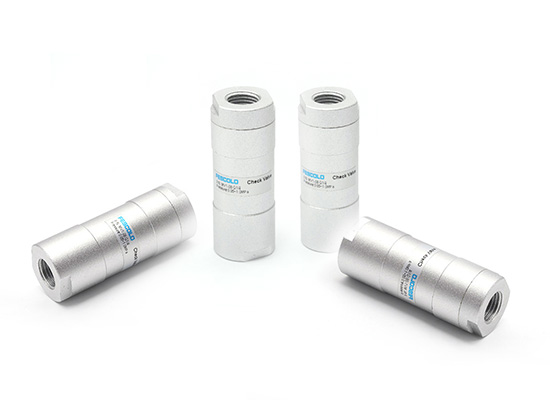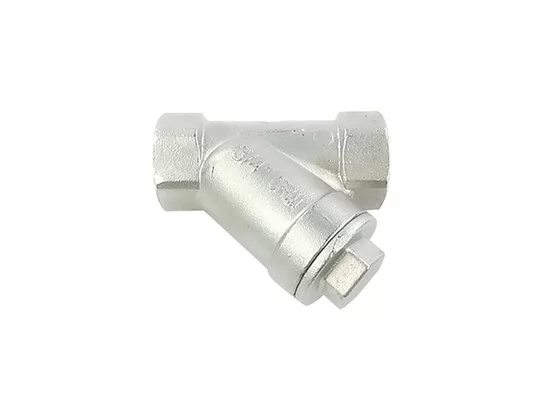What are check valves ?
Check valve is a kind of one-way fluid control valve that used to prevent backflow. "Check" means that the valve opens automatically when the medium flows in the correct direction and closes automatically when the flow return.
Check valve also can be called non return valve with a simple structure typically composed of a valve body, valve disc, guiding mechanism, and spring, they are commonly made from materials such as stainless steel, brass, or plastic. feature easy installation, quick response, reliable sealing, and compact design.
Where does no returen valve applicate?It is widely used in garden water systems, spool water,pump setups, chemical processing, oil and gas, pharmaceuticals, food and beverage industries, and gas transmission applications.
The Core Features of check valve
◆ Unidirectional flow control: The most critical feature of check valve is that it allows the medium to flow in one direction and automatically prevents backflow.
◆ No external actuation required: Another feature is that the valve core automatically opens based on fluid pressure, eliminating the need for actuation.
◆ Simple and compact design: Check one way valve has fewer moving parts, making them easy to install and maintain.
◆ Fully open/closed: Check valves are designed to operate in either a fully open or fully closed position and are not intended for fine-tuning flow or pressure.
◆ Lightweight and flexible:Pneumatic check valve uses aluminum alloy valve bodies, which are light and corrosion-resistant and are very commonly used in pneumatic systems.
Different Types of Check one way valve
Spring Vertical Lift Check Valve: This type of check valve utilizes a spring-assisted vertical lift disc. It's suitable for high-pressure, large-diameter horizontal or vertical pipelines. It opens and closes quickly, but produces loud noise and vibration.
Y-Type Spring Lift Check Valve: This type of check valve features a "Y"-shaped body with an internally tilted disc. It's suitable for medium- and low-pressure horizontal or inclined pipelines, offering smooth operation and low noise.
Inline Spring Check Valve: This compact, straight-tube type typically features a small internal spring to push the valve core closed. It offers flexible installation and is commonly used in small-diameter gas and liquid pipelines.
Miniature Inline Poppet Type Check Valve: This type of check valve is compact and is preferred for lightweight systems and pneumatic equipment. It's suitable for small systems, gas systems, or instrumentation, offering fast response and excellent sealing performance.
The Functions of Check Valve
Protect system security and normal operation of equipment.
The valve core can be quickly closed to avoid water hammer effect caused by reverse flow of the medium.
Has the function of regulating different types of media and is widely applied across various industries.
No external control devices are required, reducing system complexity.
Prevents energy loss caused by return of the medium, reducing energy consumption.
Application of Check Valve
Preventing crude oil and chemical backflow in the petrochemical industry
Preventing cooling water backflow in the power and energy industry
Preventing pollutant backflow in water treatment and municipal water supply systems
Preventing pollutant backflow in the food and pharmaceutical industry
How to Install Check Valves in a Water Line?
Installing check valves properly in a water line is a straightforward process, but it requires attention to flow direction and proper sealing. Here are the basic steps:
Turn Off the Water Supply
Shut off the main water supply to prevent leaks and pressure during installation.
Identify the Flow Direction
Check the valve body for an arrow indicating the correct flow direction. This must match the direction of water in your system.
Cut the Pipe
Use a pipe cutter or saw to create a gap where the check valve will be installed. Ensure the cut edges are clean and smooth.
Install the Check Valve
For threaded connections: Apply plumber's tape (Teflon tape) to the threads and tighten with a wrench.For PVC or copper pipes: Use appropriate solvent cement or soldering methods.
Ensure Proper Orientation
The valve must be installed upright or as recommended by the manufacturer. Incorrect positioning can prevent proper operation.
Secure and Test
Turn the water supply back on slowly. Check for leaks and ensure the valve is functioning properly
Check Valves Interface Types
Threaded:Most common, screw in type, suitable for small and medium-sized pipelines.Commonly use 1/8 ~2 inch.
Flanged:Bolt connection, good sealing performance, suitable for high flow and high pressure applications.Commonly use DN15 ~ DN600.
Welded:Used for direct welding of pipelines and valve bodies in high-pressure systems.Commonly use Stainless steel or copper system, size customized according to standards.
Push-in:Commonly used for pneumatic components such as PU and nylon hose systems.Commonly use 4 mm, 6 mm, 8 mm, 10 mm, 12 mm.
Compression:Used for hydraulic or precision piping systems.Commonly use 1/4", 3/8", 1/2" inch size.
FAQ
Q1.What is the best type of check valves for high-flow industrial pipelines?
For high-flow industrial applications, the swing check valves are often the preferred choice due to its low pressure drop and ability to handle large volumes efficiently. It's commonly used in water treatment plants, oil pipelines, and HVAC systems.
Q2.Can I use a spring-loaded check valve for compressed air systems?
Yes. Spring-loaded check valves are ideal for compressed air and pneumatic systems because they offer fast response, reliable backflow prevention, and can be installed in any orientation.
Q3.Which check valve is suitable for food-grade or sanitary applications?
For food, beverage, or pharmaceutical applications, a diaphragm check valve made with FDA-approved materials is recommended. These valves offer clean, non-contaminating performance and are resistant to corrosion.
Q4.How do I choose a check valve for a corrosive or chemical fluid system?
When handling corrosive fluids, it's best to use a plastic or stainless steel check valve with PTFE seals. These materials offer excellent chemical resistance and long-term durability in harsh environments.
















